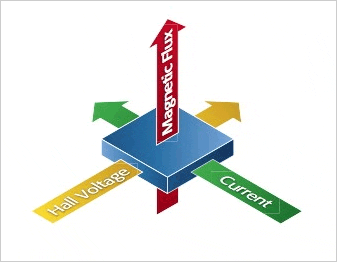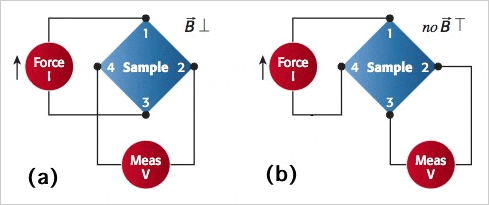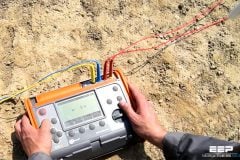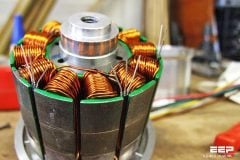Written by Robert Green
Engineers have been using Hall effect measurements to characterize materials since Edwin Hall discovered the phenomenon in 1879. The Hall effect is the generation of a voltage, called the Hall voltage, across a sample of a material when that sample is exposed to a combination of a magnetic field through the sample and a current along the length of the sample (see Figure 1).

In the electronics industry, integrated circuit manufacturers and crystal manufacturers use Hall effect measurements in materials research, device development, and device manufacturing. In addition to measuring the Hall voltage, companies use Hall effect measurement systems to determine quite a few material parameters, including carrier mobility, carrier concentration (n), Hall coefficient (RH), resistivity, magnetoresistance ®, and the conductivity type (N or P).
The recent interest in Hall effect measurements is being driven by the search for next-generation semiconductors that can overcome the barriers of size and speed posed by silicon-based materials. The goal is maximizing carrier mobility with materials that can create smaller components and minimize heat dissipation. There is great hope that nanomaterials and single atomic layer crystals such as graphene or graphene-based material structures will be the solution. To characterize the properties of these new materials, including analyzing carrier mobility, Hall effect measurements are essential.
A basic Hall effect measurement system will likely include the following:
A constant-current source. For low resistivity material samples, the source must be able to output from milliamps to amps of current. For high resistivity samples (such as intrinsic semiconductors), the constant current source may have to be able to go as low as 1 nanoamp, but in general, a source capable of producing from 10 microamps to 100 milliamps will suffice.
A high input impedance voltmeter. The voltmeter used must be able to make accurate measurements anywhere from 1 microvolt to 100V. High resistivity materials may require ultra-high input Z or differential measurements. A permanent magnet or an electromagnet. These are typically available with ranges from 500 to 5000 gauss.
A sample holder.
Depending on the application, your test system might also include some other equipment. The recommended technique to get the best quality measurements requires that multiple measurements be made at multiple edges of the sample; thus, a switching matrix is recommended to reliably acquire all measurements. Also, because Hall mobility is dependent on sample temperature, you may want a temperature measurement probe capable of 0.1°C resolution.
Measuring Mobility
To determine carrier mobility (µH), you first measure the Hall voltage (VH) by forcing both a magnetic field perpendicular to the sample and a current through the sample. Accurate measurements of both the sample thickness (t) and its resistivity (ρ) are also required. With just these five parameters (B, I, VH, t, and ρ), you calculate the Hall mobility using the following formula:
μH= |VHt| / BIρ

To obtain results with high confidence, we recommend that you take eight different measurements. You reverse the source current polarity, source on additional terminals, and reverse the direction of the magnetic field. If the voltage readings differ substantially, it’s advisable to recheck the test setup to look for potential sources of error.
For more on this topic, see the Keithley application note, “Hall Effect Measurements in Materials,” downloadable from Keithley’s website: http://www.keithley.com/data?asset=55773.
Biographical Note
Robert Green is a senior market development manager at Keithley Instruments, Cleveland, Ohio, which is part of the Tektronix test and measurement portfolio. During his career at Keithley, Green has been involved in the definition and introduction of a wide range of instrumentation.
He holds a BS in electrical engineering from Cornell University and an MS in electrical engineering from Washington University in St. Louis, Missouri.











It is good to have comments and reach
It is interesting to know better and clear views